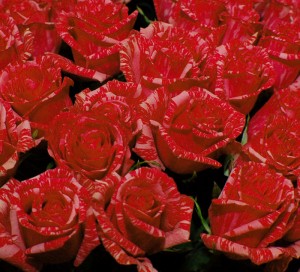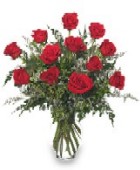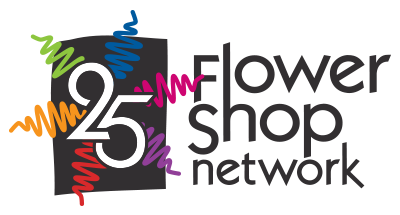Have you ever pulled the petals from a daisy, one by one, while reciting “he loves me, he loves me not……” until only the yellow, button-like center remained (and you had your answer)? As if by some powerful magic, flowers seem to know the secrets of the heart.
Flowers Know The Secrets To The Heart
With Valentine’s Day approaching, it’s interesting to note that flowers have always been associated with romance, well before human beings first started pulling their petals off… even before we noticed them, for that matter.
 Consider: Flowers are the reproductive mechanisms of the vast majority of the plants on earth. They exist solely to assure the procreation and propagation of their species by distributing pollen and dispersing seeds. Consequently, they have developed a wide range of seductive characteristics designed to lure their would-be pollinators.
Consider: Flowers are the reproductive mechanisms of the vast majority of the plants on earth. They exist solely to assure the procreation and propagation of their species by distributing pollen and dispersing seeds. Consequently, they have developed a wide range of seductive characteristics designed to lure their would-be pollinators.
Virtually everything that we find appealing about flowers the shape, the fragrance, the color, the texture evolved as a means of effective flirtation with an animal suitor. All of those alluring properties that speak directly to our own hearts, spoke first to the birds, bees, bats, and butterflies who are the vehicles of floral lovemaking, carrying potent grains of pollen from virile anther to receptive stigma.
There is even a certain species of orchid whose flower parts very closely resemble the female of a particular kind of wasp. When a male wasp spots it and buzzes in for an “intimate encounter”, he unwittingly gets himself dusted with pollen before he flies off, frustrated, in search of another paramour. You get the picture. Love can be a tricky business.
We humans are the happy beneficiaries of all this sex in the garden, for we are just as responsive to the heady perfumes and beguiling hues that flowers produce as are the birds and bees. Just like the other beasts with whom we share this planet, we are hard-wired for romance, and flowers push all the right buttons.
The Victorian Age’s Secret Language of Flowers
 It makes sense, then, that when people of the Victorian Age saw a public display of the more carnal instincts, it was considered unseemly. Thus developed the so-called Language of Flowers, an elaborate system of codified meanings ascribed to certain flowers and herbs.
It makes sense, then, that when people of the Victorian Age saw a public display of the more carnal instincts, it was considered unseemly. Thus developed the so-called Language of Flowers, an elaborate system of codified meanings ascribed to certain flowers and herbs.
Using the Language of Flowers, a suitor could send a hidden, romantic message to his beloved by combining the appropriate flowers into a telling bouquet, and she could respond in kind. The remnants of this custom prevail today in the fact that there is no other flower that says “I love you” quite as eloquently as a red rose.
Speak The Language of Love
Your local professional florist is well equipped to help you speak the language of love on Valentine’s Day, or any day. Of course, roses are available in an ever-increasing range of colors beyond the traditional red ones (which, for the most part have had the fragrance bred out of them in favor of stem length and vase life; many of the other colors carry a stronger scent). Or you may choose to send your beloved a beautiful bouquet of early spring blossoms such as tulips, freesia, lilies, iris, and stock. Many of these flowers are heady with fragrance and are sure to bewitch the bee in all of us. But for some of us, red roses will always be the most compelling.
Whatever your choice, be sure to place your order several days in advance. Consider having the flowers delivered a day or two early to extend the enjoyment and to assist your florist in reducing Valentine’s Day pressure. You’ll be glad you did it, and the object of your affection will clearly hear the message from your heart. Tips for Sending Flowers


 Find Your
Find Your
Speak Your Mind